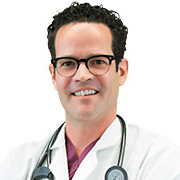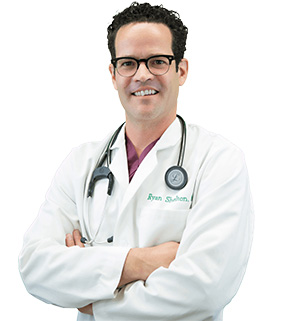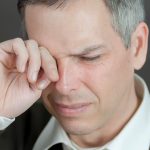One of the last things a man wants to see as he gazes in the mirror is his hair falling out. But that is exactly the fate that awaits nearly every man on the planet at some point in life. Male pattern baldness (MPB), or androgenic alopecia as it’s scientifically referred to, is a fact of life for men, occurring as the body ages and the hair follicles begin to become ever less efficient.
While men are the primary sufferers of alopecia, women also experience hair loss, which can be particularly distressing them as it is not expected, but hair loss is difficult to deal with for either sex.
There are unfortunately many causes of hair loss, from poor diet to stress and even things like chronic disease and even medications you may take. However, the most prevalent and unavoidable type of baldness, male pattern baldness, is simply caused by genetics, and some men are predisposed to losing their hair at a younger age than others.
Just because male pattern baldness is genetic and inevitable in some cases, this doesn’t mean that scientists aren’t constantly working on ways to protect men’s hair longer and prevent early MPB. Among the treatments available, there are creams to rub on the hair, pills to ingest to help the hair follicle, shampoos, conditioners, and nearly every approach under the sun.
The problem with prescription hair loss medications, like other prescription medications, it is not without side-effects. Sometimes these side effects can turn out to be worse than the actual ailment. For instance, some of the side effects for a popular hair cream include severe irritation of the scalp, which can’t be great for hair follicles, unwanted growth of facial hair, which would be devastating for a woman using this medication.
Other side effects include chest pain and rapid heartbeat, swelling of the hands and feet, rapid weight gain, feeling lightheaded, headache, dizziness, confusion, flushing of the face, and many more effects that aren’t hair growth.
As we become more enlightened about what we put in and on our bodies, we’ve discovered that several natural treatments exist for hair loss that are as effective as the prescription medications, but much cheaper and without all of the intense unwelcomed side effects.
One such natural treatment for hair loss is rosemary oil. Studies show that rosemary oil works to regrow hair as well as the prescription medication Rogaine, with participants experiencing a significant increase in hair growth after 6 months of applying a rosemary oil to the scalp. And although applying oil to the scalp may not sound ideal to many due to the prospect of walking around with extremely oily hair, researchers also found that although it was an oil based product, rosemary oil applied to the scalp did not increase the instances of oily hair, dry hair, or dandruff.
Rosemary oil is a wonderful treatment for MPB, because it nourishes the hair follicle, and does so without generating any other unwanted effects in the body. The herbs Saw Palmetto and Singing Nettles should also be considered.
Another new, pseudo-holistic treatment for male pattern baldness being examined is the hormone progesterone. Yes, you read that correctly; the other half of the two most important female hormones may actually help men regrow hair.
We tend to think of estrogen and progesterone as strictly female hormones, but the truth is that progesterone is not only found in men, but that men actually rely on it for their manliness, as it is a precursor to testosterone. Estrogen is also found in men, and steadily rises as men age and testosterone decreases.
Studies are underway and already showing great promise for progesterone as a safe, effective treatment for male pattern baldness. Researchers recently published a study on the effect of 11a-hydroxyprogesterone on the hair growth in men suffering from androgenetic alopecia.
Scientists tested 10 men suffering from androgenetic alopecia, each for the span of one calendar year, giving them a topical solution, in the form of a lotion, made of 1 percent 11a-hydroxyprogesterone. During the trial, researchers evaluated hair root status and health, hair shaft diameter of anagen hair roots, and the number of hairs with less than a 40 micron diameter.
After the trial was complete, participants treated with the progesterone solution showed an increase in the number and mean hair shaft diameter of anagen hair roots. Hair growth occurs in three phases. Each follicle begins in what is called the anagen phase, a period lasting between 3 and 7 years in which the hair continually grows. This is followed by a 10 day period of transition called the catagen phase, during which time the hair does nothing. And finally, the last stage of hair growth is called the telogen phase, wherein the hair falls out.
The topical progesterone treatment was found to increase the number of hairs in their anagen phase, and decreased amounts of hair in their catagen phase, the transitional period between hair growth and hair release, i.e., falling out, which is the key to maintaining a full head of hair.
Your hair lives in a delicate balance between these different stages of growth. If it all hit each stage at once, it would eventually all fall out after a few years, at once, leaving you completely bald for a few days until it began to regrow.
The ideal state of hair growth is to have more follicles in the anagen phase than in the telogen phase, with more of it growing than falling out, and that is the promise that progesterone treatments seem to be making.
This study however concludes that the number of dysplastic/dystrophic hair roots –those which are dying or dead- remained unchanged, which isn’t all bad, because the amount of dysplastic/dystrophic hair roots in the control group –those who did not receive treatments- increased, signifying continuing progression into male pattern baldness.
Another study has upped the ante with a 2 to 5 percent progesterone concentration, with similar results. Researchers find that progesterone treatments are a reasonable approach to baldness, but there are limitations to any therapy.
The bottom line is that we live in a wonderful period in human history, and there are plenty of options to choose from when treating male pattern baldness and hair loss in general. Perhaps one day scientists will finally invent a device that heals the human body instantly, but until then, progesterone and other effective treatments for male pattern baldness exist and are effective.










